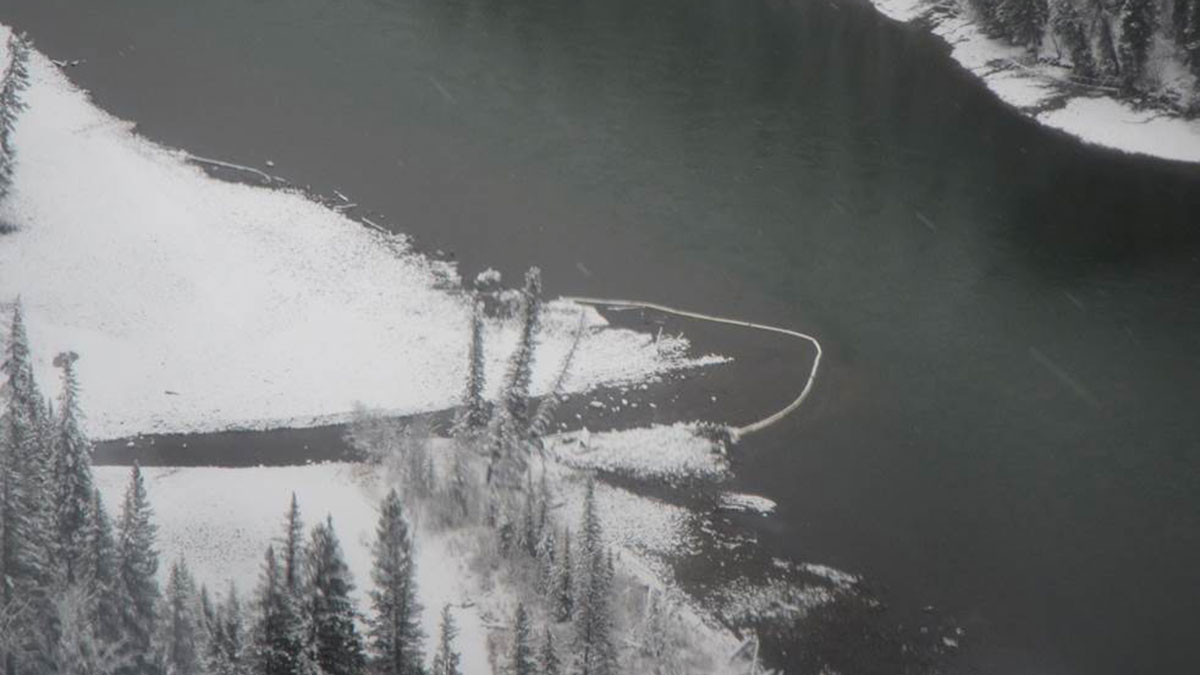 Supplied
SuppliedFour years ago on Halloween, the walls of a mine process water pit near Hinton, Alberta collapsed and gushed 268 Olympic swimming pools worth of coal slurry into the Athabasca River.
A recent University of Alberta study has shown how the Obed Mountain Mine coal spill, the largest of its kind in North American history, initially contaminated the Athabasca River and caused the destruction of Athabasca rainbow trout habitats.
As 670,000 litres of contaminated water flowed down the Athabasca River, Colin Cooke, an aquatic scientist at the U of A, monitored the spill and alerted downstream towns to turn off their drinking water when the contaminants approached. Cooke, also a scientist with the Alberta Environmental Monitoring, Evaluation and Reporting Agency, was the lead author of the U of A’s recent study.
“I’d never seen a spill of that magnitude up close,” Cooke said. “Initially I was quite surprised and shocked at just how damaged the area was.”
Cooke’s team found that process water from the pit contained lead, mercury, and carcinogenic hydrocarbons. The contaminated water also included nutrients such as nitrogen and phosphorous, which can limit plant growth in the ecosystem.
Damage was greatest for creeks near the spill site, the habitat of Athabasca rainbow trout, a species of concern. The 50 metre wide wall of water overwhelmed the one meter wide waterways and “tossed trees like matchsticks,” Cooke said, devastating the trout habitat. Other wildlife such as frogs and insects have also been impacted.
“There’s a lot of worry about what (the spill has) meant for the fish and the bugs that live in those tributaries,” he said.
Lighter material such as coal were carried downstream by the river to the arctic ocean, and heavier material, such as mercury, settled on the river’s floor, clumping with sand and soil. Small invertebrates that feed on the riverbed could ingest the contaminants, leading to their accumulation at higher levels in the food chain, Cooke said.
A 2015 investigation by the Alberta Energy Regulator resulted in the laying of six charges against Sherritt International Corporation, the owner of the Obed Mountain Mine at the time of the spill. In the long term, Westmoreland Coal Company, the current owner of the Obed Mountain Mine, must monitor the river and provide regular environmental updates to the province. Since the scale of the spill is so large, Cooke has pushed for the hiring of researchers from the U of A and other universities to evaluate the spill in the future.
A few years of data must be collected before long-term environmental impacts can be assessed. Though the chemical composition of the Athabasca River was already back to normal after only a year, trout-inhabited creek beds near the spill site will take much longer to recover as they have been washed out, Cooke said.
Cooke now wonders if the creek ecosystems will be restored to their previous state, which is the usual mandate, or whether a more trout-friendly environment will be created by the provincial government.
“Prior to the spill there were a lot of beaver dams in those creeks. Maybe it wasn’t the best environment for Athabasca Rainbow Trout,” he said. “Now the question is, do we want it to go back to that state?”





Some evidence of the degree/extent of actual biological uptake of mercury etc. would also be good.